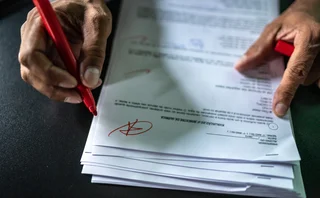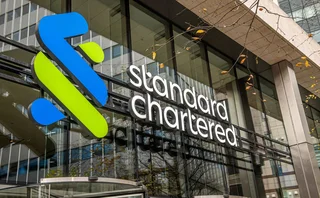

Model updates buttress Allianz's solvency ratio
Solvency II requirement less sensitive to rates, credit volatility than 2017
A retooled internal model permitted Allianz to revise down its estimate of how much a market shock could deplete its Solvency II capital ratio.
The German insurer said it improved the modelling of cross effects between risk types in the fourth quarter, which reduced the sensitivity of its regulatory ratio to a sudden widening of credit spreads and a jolt to interest rates compared to the year prior.
The firm now estimates that a 50 basis point collapse in interest rates would shave just
Only users who have a paid subscription or are part of a corporate subscription are able to print or copy content.
To access these options, along with all other subscription benefits, please contact info@risk.net or view our subscription options here: http://subscriptions.risk.net/subscribe
You are currently unable to print this content. Please contact info@risk.net to find out more.
You are currently unable to copy this content. Please contact info@risk.net to find out more.
Copyright Infopro Digital Limited. All rights reserved.
As outlined in our terms and conditions, https://www.infopro-digital.com/terms-and-conditions/subscriptions/ (point 2.4), printing is limited to a single copy.
If you would like to purchase additional rights please email info@risk.net
Copyright Infopro Digital Limited. All rights reserved.
You may share this content using our article tools. As outlined in our terms and conditions, https://www.infopro-digital.com/terms-and-conditions/subscriptions/ (clause 2.4), an Authorised User may only make one copy of the materials for their own personal use. You must also comply with the restrictions in clause 2.5.
If you would like to purchase additional rights please email info@risk.net
More on Risk Quantum
Post-UBS takeover, Switzerland sees biggest regional G-Sib score spike
Credit Suisse acquisition pushes UBS’s complexity category to all-time high, driving up country’s overall score
Deutsche’s IRC tops €8 billion in four-year high
Ballooning credit-event risk charge contrasts with Q3 drop at BNP Paribas, ING
Fed’s stricter G-Sib scoring punishes BofA, Goldman
Duo’s method 2 capital requirements will diverge further from those entailed by Basel’s methodology
Italian funds snatch record €24bn debt securities in September
Mixed funds’ holdings jump by half as bond-only funds tick up 2%
Options expiry triggers $4bn liquidity shortfall at NSCC
Second-largest simulated shortfall on record mitigated by extra liquidity deposit and OCC commitment
Goldman chalks up highest VAR breach since pandemic
Nine breaches in total across 34 banks in Q3
Nomura’s HQLAs hit record ¥7.1 trillion
Notes issuance, favourable yen boost easy-to-sell reserves
StanChart boosted OTC clearing rate by 11.7pp in 2023
Tilt contrasts with move away from CCP trades at Citi, Wells Fargo







